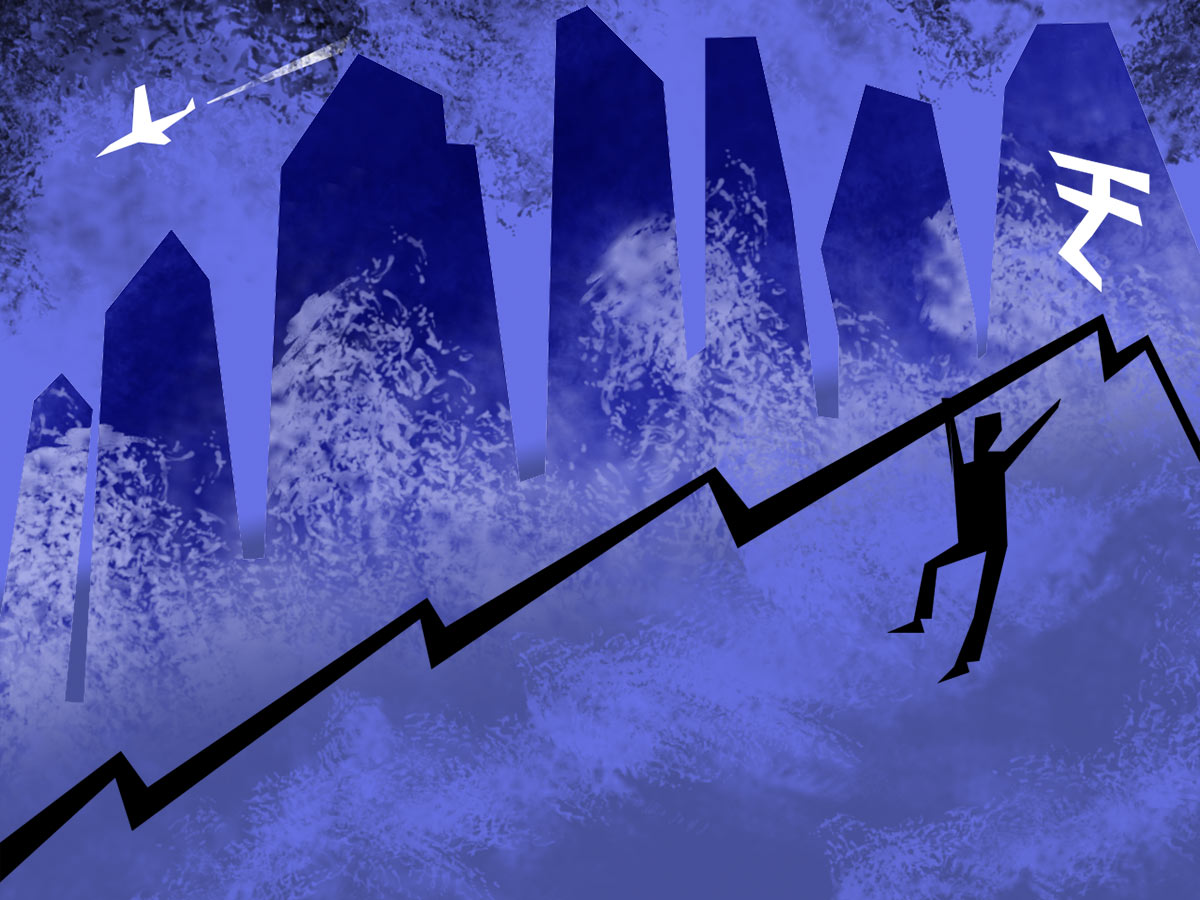The ratio of market capitalisation to gross domestic product (GDP) in India remains elevated despite the recent correction in the equities markets.
It was 147.5 per cent on December 3, 56 per cent higher than the 10-year average of 94 per cent.
The current ratio is slightly lower than the all-time high ratio of 154 per cent at the end of September this year.
It is the highest on record after December 2007 and September.
The combined market capitalisation of all BSE companies is up around 24 per cent in the past 12 months compared to 9.5 per cent year-on-year growth in India’s annual GDP at current prices, also called nominal GDP.
For comparison, the ratio was 126.4 per cent at the end of December last year and 107.2 per cent at the end of the same month in 2022.
It had declined to an 11-year low of 56.5 per cent when the pandemic came in March 2020.
At its peak in September this year, the BSE companies’ combined market capitalisation reached Rs 474.4 trillion.
India’s nominal GDP grew to Rs 307.9 trillion (around $3,650 billion) during the year-ended September 2024 (Q2FY25) from Rs 281.2 trillion (around $3,500 billion) during the year ended September last year.
In comparison, the combined market capitalisation of all BSE companies jumped from Rs 364.3 trillion at the end of December last year to Rs 453.5 trillion on Tuesday.
India’s market capitalisation has now grown at a faster pace than the country’s GDP for seven consecutive quarters in a row beginning April-June 2023 (Q1FY24).
This is the second-longest winning streak for the market cap to GDP ratio after 2005-07, when market capitalisation had grown faster than the country’s GDP for 13 consecutive quarters.
India’s market cap to GDP ratio remains one of the highest among the major economies.
The ratio in India is closer to that in developed markets of North America and Western Europe rather than in emerging economies such as China, Mexico, and Brazil.
Analysts attribute the high ratio to rich equity valuations compared to other emerging markets.
“Price to earnings valuation in India remains one of the highest among the emerging markets and close to that we see in developed markets such as the United States (US) and Japan,” said Dhananjay Sinha, co-head (research and equity strategy), Systematix Institutional Equity.
The ratio is now the highest globally after the US and Japan and ahead of other developed economies such as Canada, the United Kingdom (UK), and France.
The US tops the league table with a ratio of 216.8 per cent.
It is followed by Japan with a market capitalisation of $6.5 trillion currently against a GDP of $4.1 trillion.
This ratio is 145.1 per cent in Canada, 87.6 per cent in the UK and 92.8 per cent in France.
In comparison, the ratio is relatively low emerging markets with the exception of India.
For example, all listed companies in China currently have a combined market capitalisation of $10.35 trillion against the country’s annual GDP of $18 trillion currently, translating into a ratio of 57.5 per cent.
The country’s current ratio is slightly below its 10-year average ratio of 58 per cent.
In Brazil, all listed companies have a combined market cap of $676 billion against the country’s annual GDP of $2,245 billion, giving it a ratio of 30.1 per cent.
This is significantly lower than Brazil’s 10-year average ratio of 42 per cent.
The ratio is even lower in Mexico at 19.8 per cent, which is much lower than its 10-year average ratio of 28 per cent.
This analysis excludes smaller economies and markets such as Hong Kong, Taiwan, and Saudi Arabia, where the ratio could be
distorted owing to the listing of large global companies.




